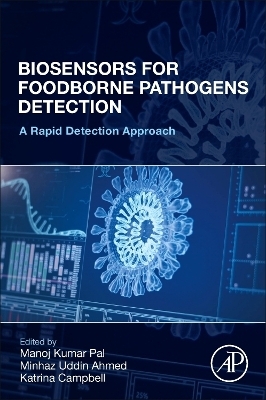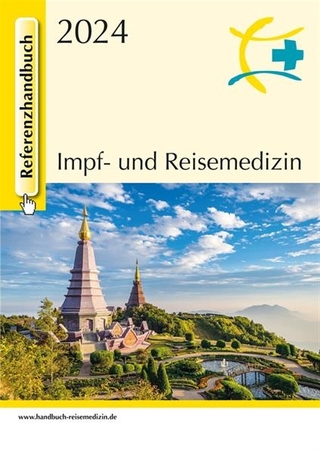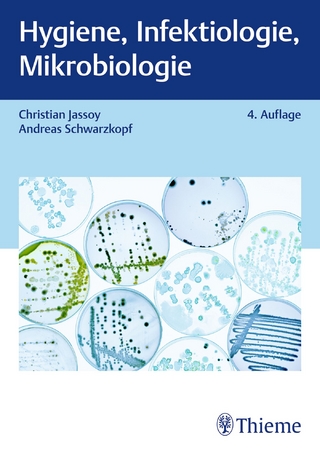
Biosensors for Foodborne Pathogen Detection
Academic Press Inc (Verlag)
978-0-323-95586-7 (ISBN)
This book act as a comprehensive resource for researchers or scientists working in food safety, especially in microbial food spoilage detection using biosensors.
Manoj Kumar Pal received the Ph.D. degree from Indian Institute of Technology (IIT) Roorkee, India, in 2010. During his Ph.D. studies, he worked on the development of chemical and biological sensors. He was a postdoctoral Research Fellow at the Department of Life Sciences, Hebrew University of Jerusalem, Israel, from 2010 to 2011. He also worked as a Research Associate with the Department of Biotechnology, IIT Roorkee, from 2011 to 2012, where his research work was focused on drug encapsulation in biodegradable nanoparticles and delivery into Leishmanian infected microphages using CD14 biomarker. He did second Post-Doctoral Research at the Department of Life Science, Ben-Gurion University of the Negev Israel, from 2012 to 2015. He has authored 16 research articles in peer reviewed journals and conferences of international repute. His core area of research is the utilization of different physio-chemical sensing methods in development of the new biosensing concepts for therapeutic purposes. Dr. Minhaz Uddin Ahmed is an Associate Professor of Analytical Chemistry and Biotechnology at the Universiti Brunei Darussalam. He obtained his Ph.D. in Chemical Materials Science from Japan Advanced Institute of Science and Technology in 2008 and later worked as JSPS post-doctoral fellow at Osaka University, Japan (2008-2009), DARPA post-doctoral research associate at Duke University, USA (2009-2010) and NSERC post-doctoral fellow at INRS-EMT, Canada (2010-2012). Dr Ahmed is an alumnus of JAIST and a prestigious young participant/fellow of 57th Lindau Nobel Laureate Meeting for Physiology and Medicine, 2007, Germany. In 2008, he was awarded with the prestigious Japanese Society for the Promotion of Science young scientist award to work in Graduate School of Engineering of Osaka University. In 2009, he was awarded with the United States Defense Advanced Research Project Agency post-doctoral fellowship to work at Pratt School of Engineering of Duke University. Katrina Campbell is a Professor in Food Security and heads the Biosensors Strand within the Centre for ASsured, SafE and Traceable food (ASSET). Katrina is a member of the Royal Society of Chemistry, the Institute of Biology, Irish Toxicology Society and International Society for the study of harmful algae. Katrina obtained a BSc (Hons) in Biochemistry in 1995 and a MMedSc in Ultrastructural Anatomy and Pathology in 1996 from Queen's University Belfast. Her research focussed on developing innovative biosensor screening methods for the detection of chemical contaminants, toxins and foodborne pathogens in food, animal feeds and the environment. She has extensive experience in bioanalytical method development, validation and evaluation with state-of-the-art technologies, end product formation as kits and technology transfer workshops and events for dissemination.
1. Foodborne pathogens and source of contamination
2. Methods, techniques and latest developments in the detection of foodborne pathogens
3. Need of rapid detection methods and strategies for food borne pathogens
4. Biosensors and bioelectronics for the foodborne pathogens: Basic principle
5. Various bio-recognition receptors used in the biosensors and biosensors for foodborne pathogens. Antibody, aptamer, DNA, RNA, Protein, MIP, nanozyme etc.
6. Nanomaterials and signal amplification in biosensors for foodborne pathogens
7. Electrochemical biosensors for foodborne pathogens
8. Magneto sensors
9. Photoelectrochemical sensors
10. Chemiluminescent and Electrochemiluminescence (ECL) biosensors for foodborne pathogens
11. Optical biosensors for foodborne pathogens
11 (i) Surface Plasmon Resonance biosensors for foodborne pathogens
12. Microcantilever biosensors for pathogen detection
13. Liquid Crystal/piezoelectric/QCM Biosensors for foodborne pathogens
14. Phage based biosensors for foodborne pathogens
15. MEMS/Microfluidics in biosensors and their applications in the detection of foodborne pathogens
16. Colorimetric/smartphone/paper-based biosensors
17. Label free Biosensors
18. Label based Biosensors
19. Cost effectiveness, reliability, selectivity, the sensitivity of current and future foodborne pathogen biosensors
20. Recent trends and challenges on CRISPR-Cas food borne pathogen biosensors
21. Application of Biosensors in food safety and management
| Erscheinungsdatum | 05.03.2024 |
|---|---|
| Verlagsort | Oxford |
| Sprache | englisch |
| Maße | 152 x 229 mm |
| Gewicht | 450 g |
| Themenwelt | Medizin / Pharmazie ► Medizinische Fachgebiete ► Mikrobiologie / Infektologie / Reisemedizin |
| Technik ► Lebensmitteltechnologie | |
| ISBN-10 | 0-323-95586-X / 032395586X |
| ISBN-13 | 978-0-323-95586-7 / 9780323955867 |
| Zustand | Neuware |
| Haben Sie eine Frage zum Produkt? |
aus dem Bereich


